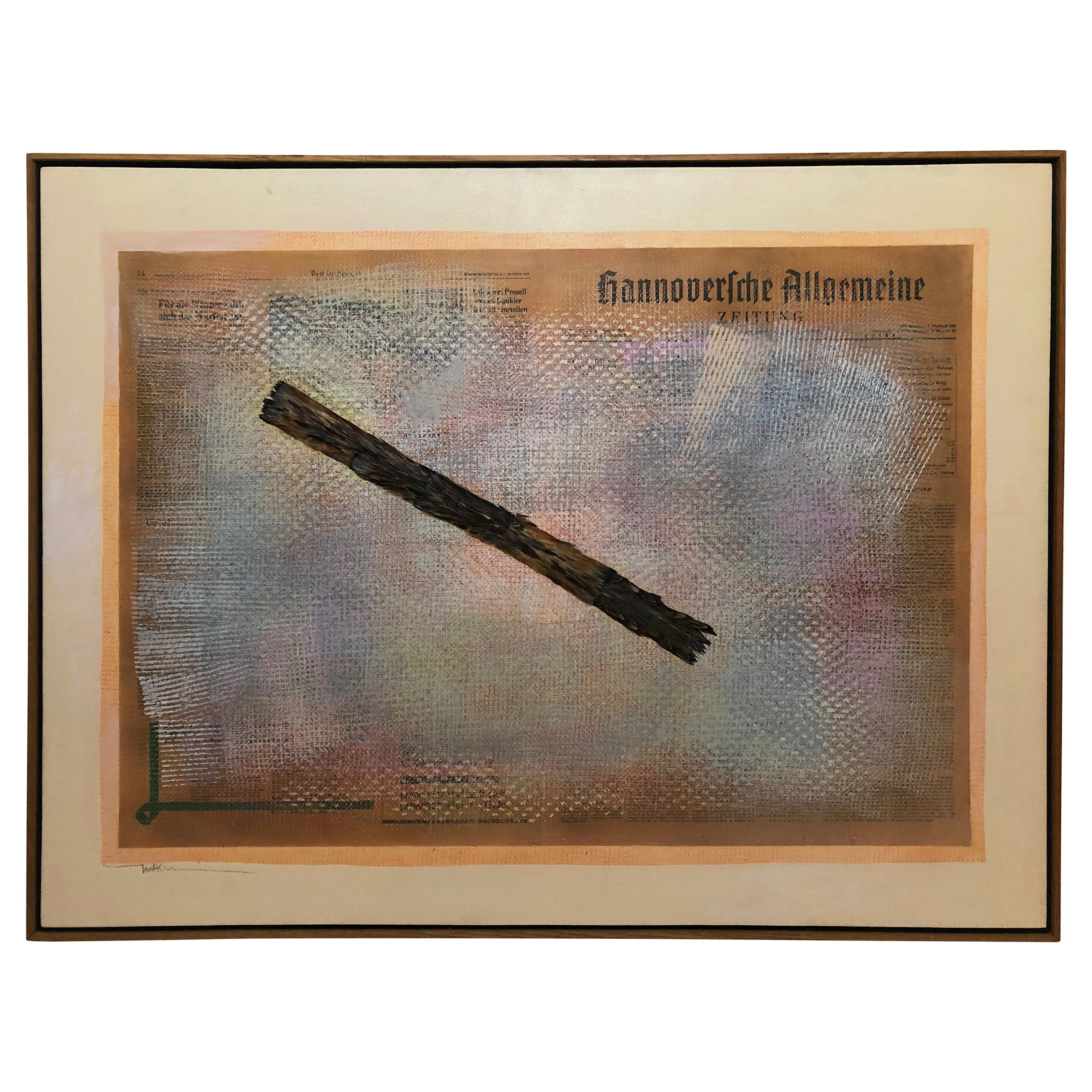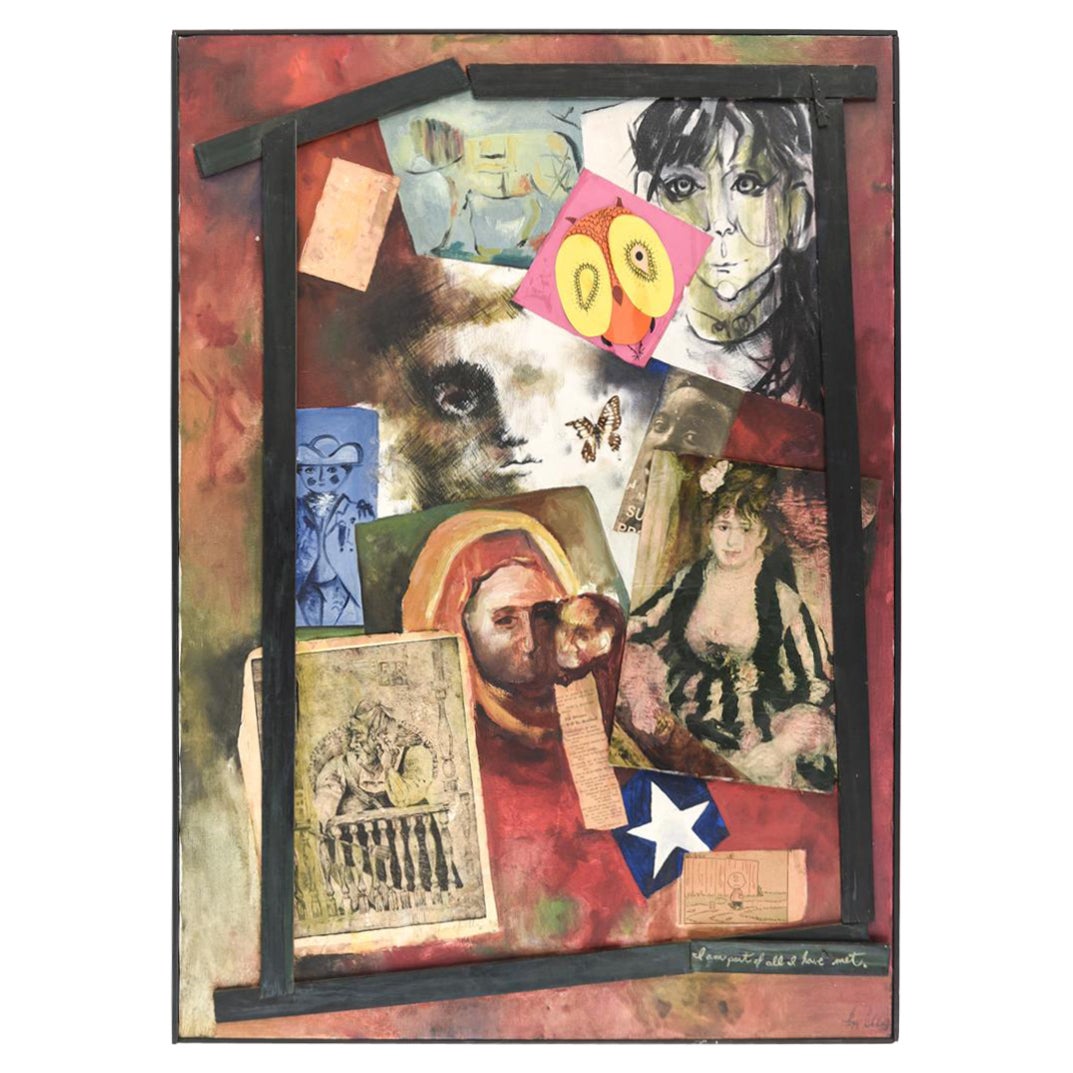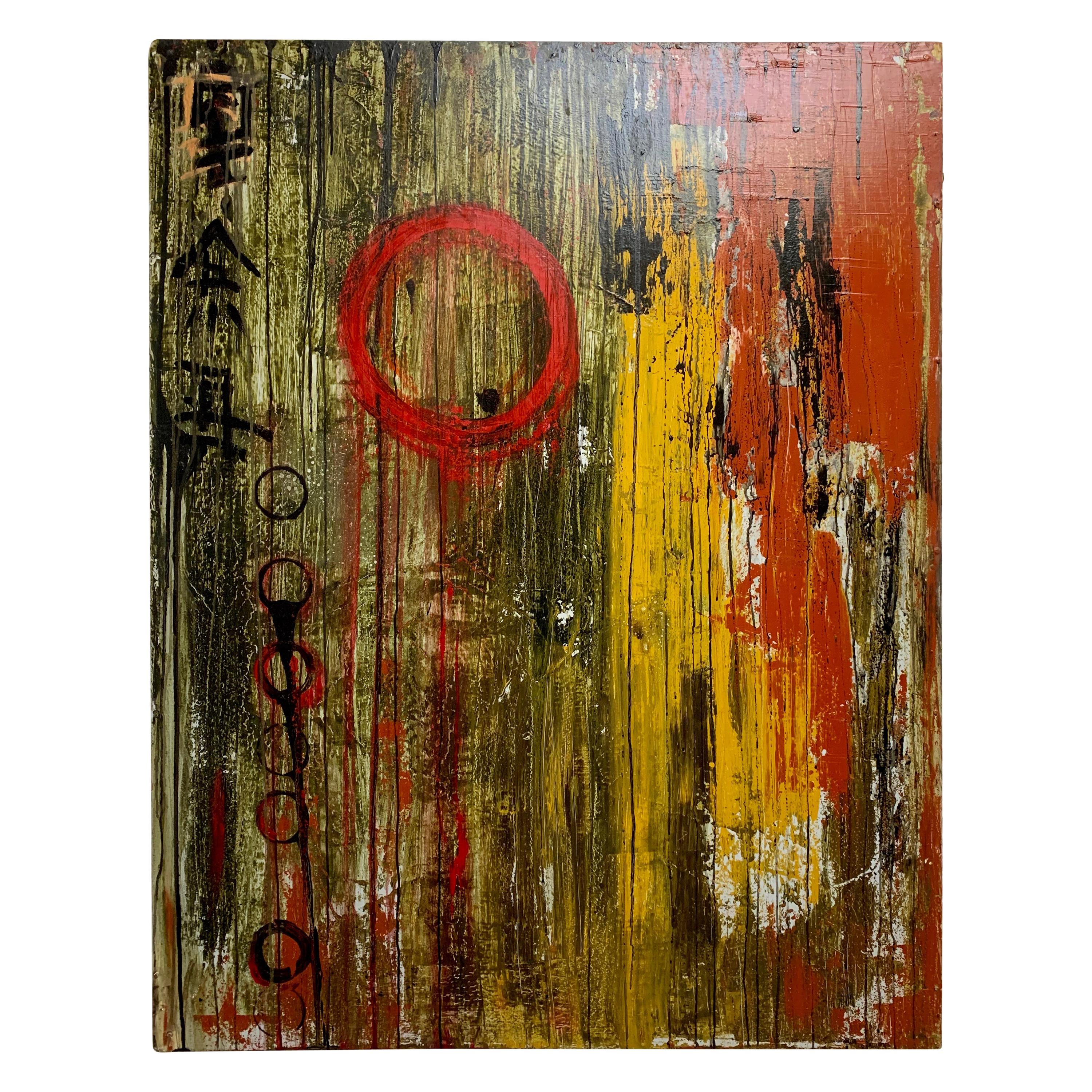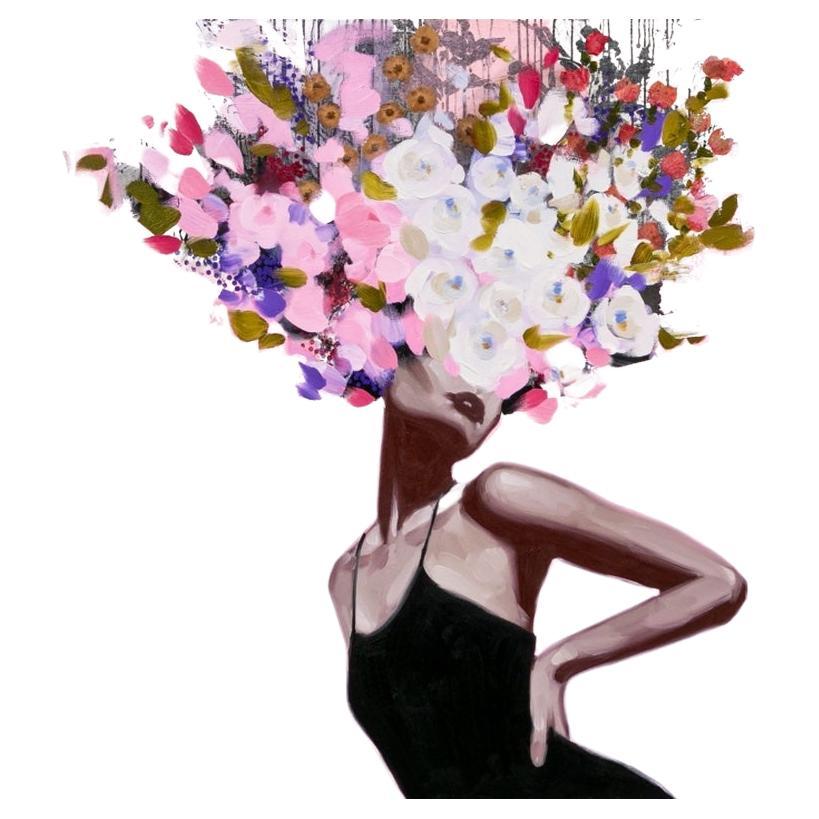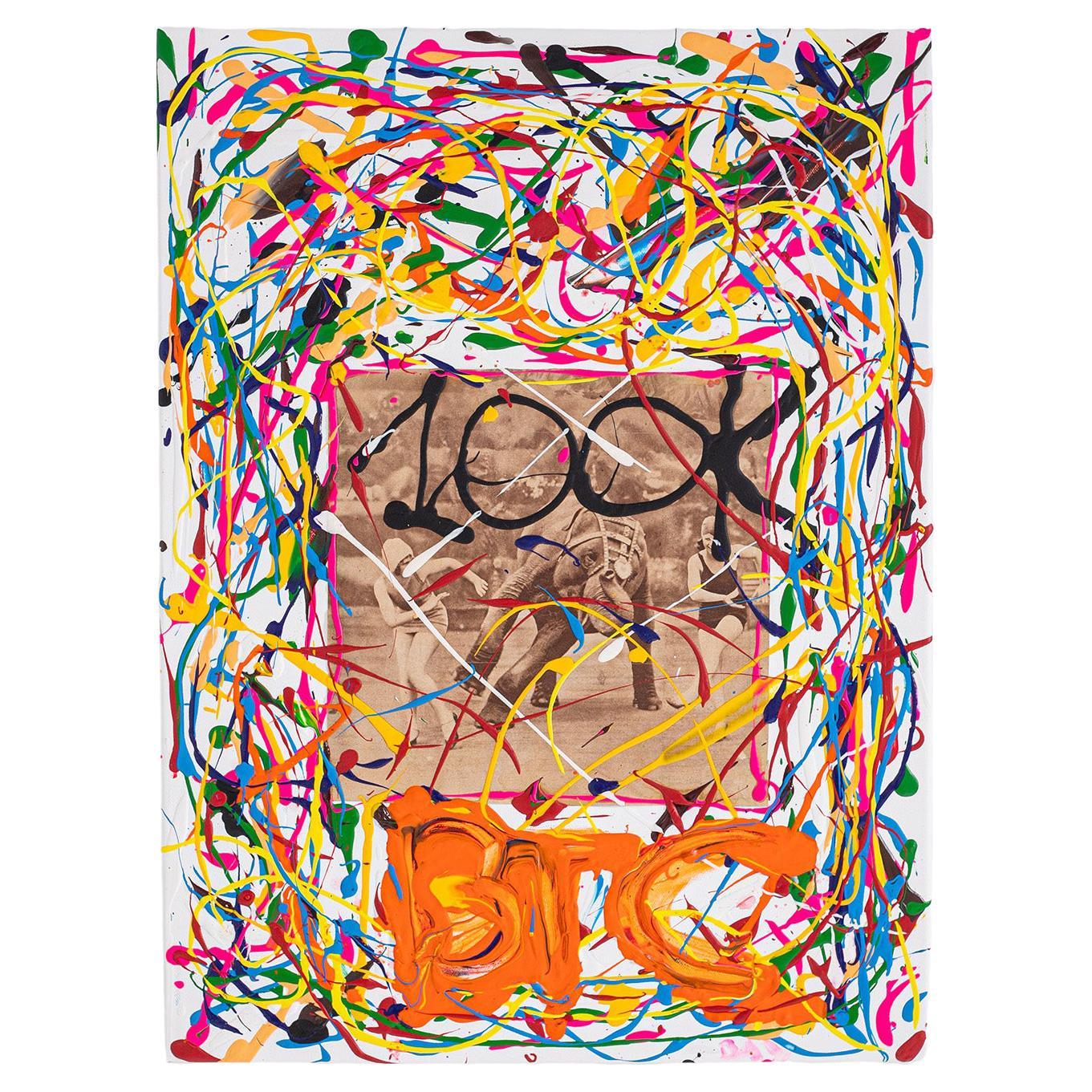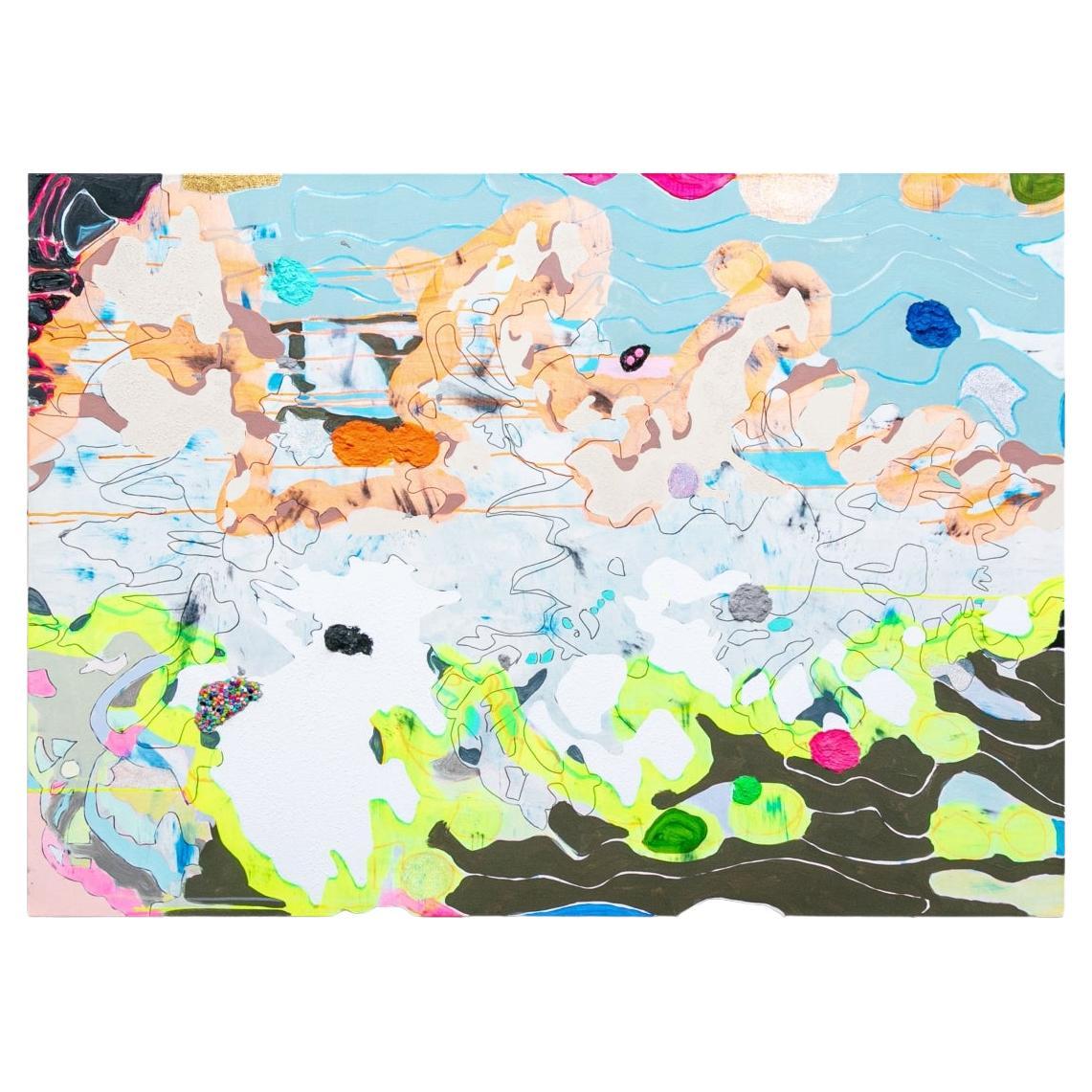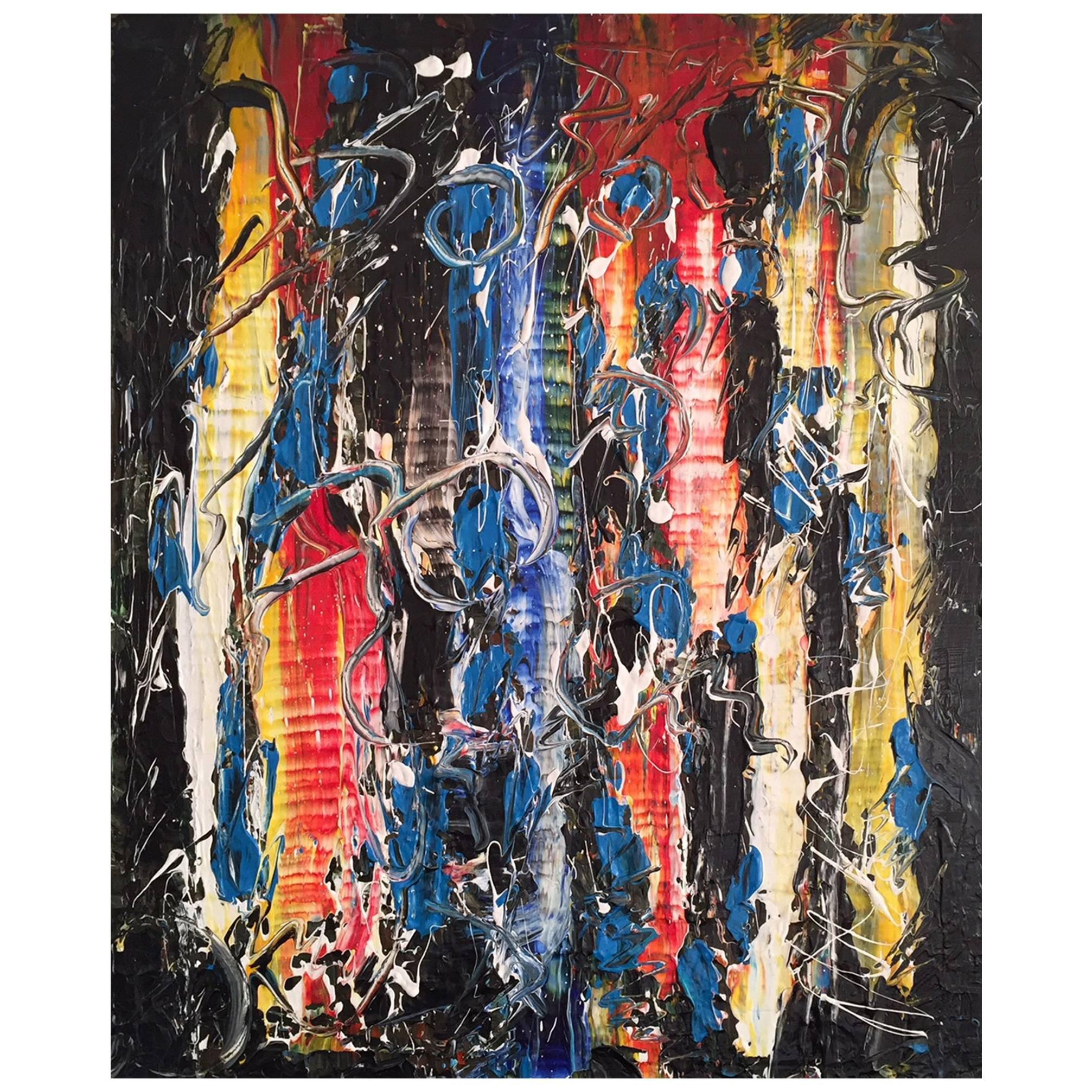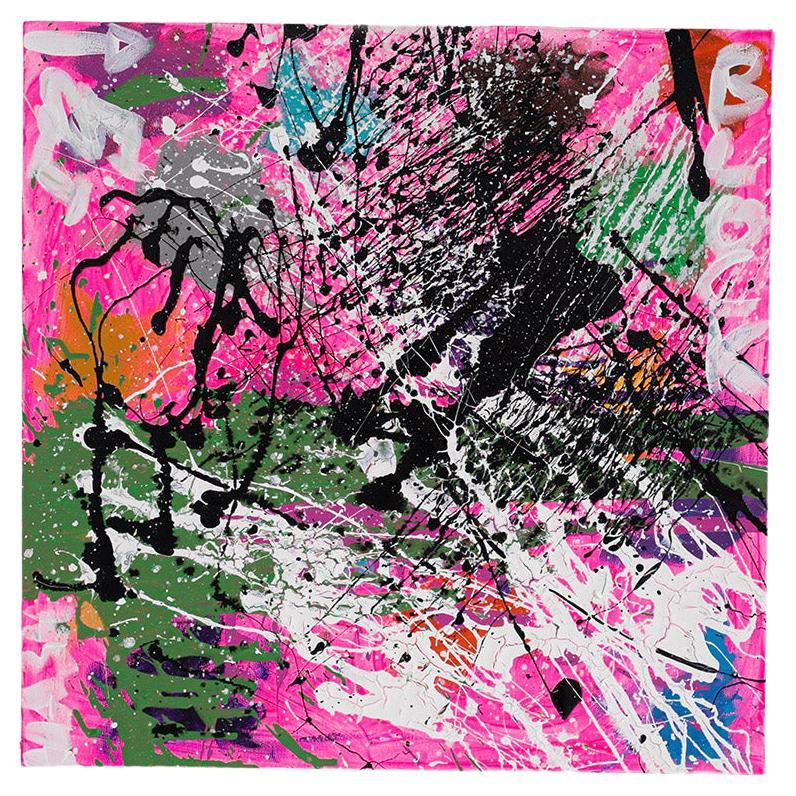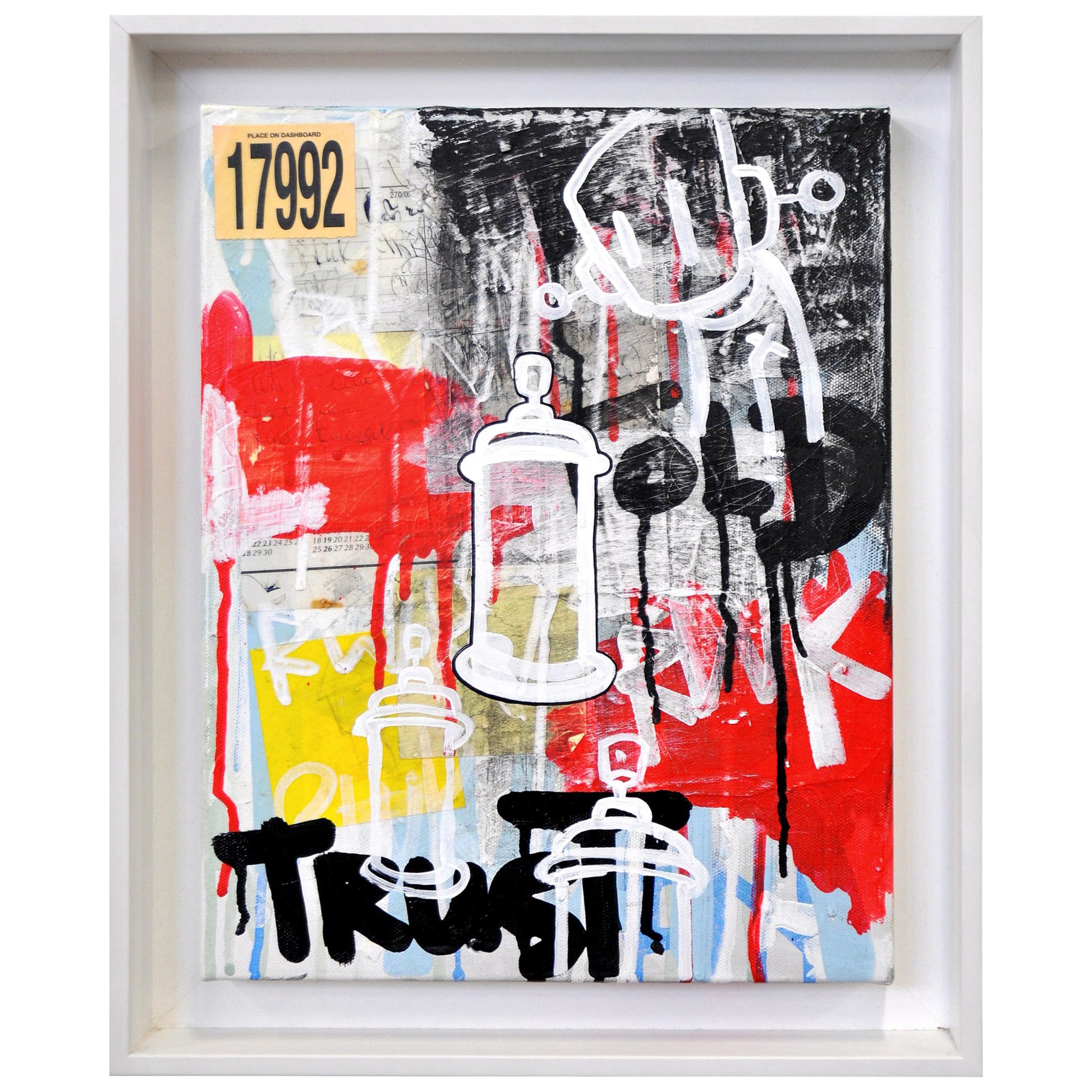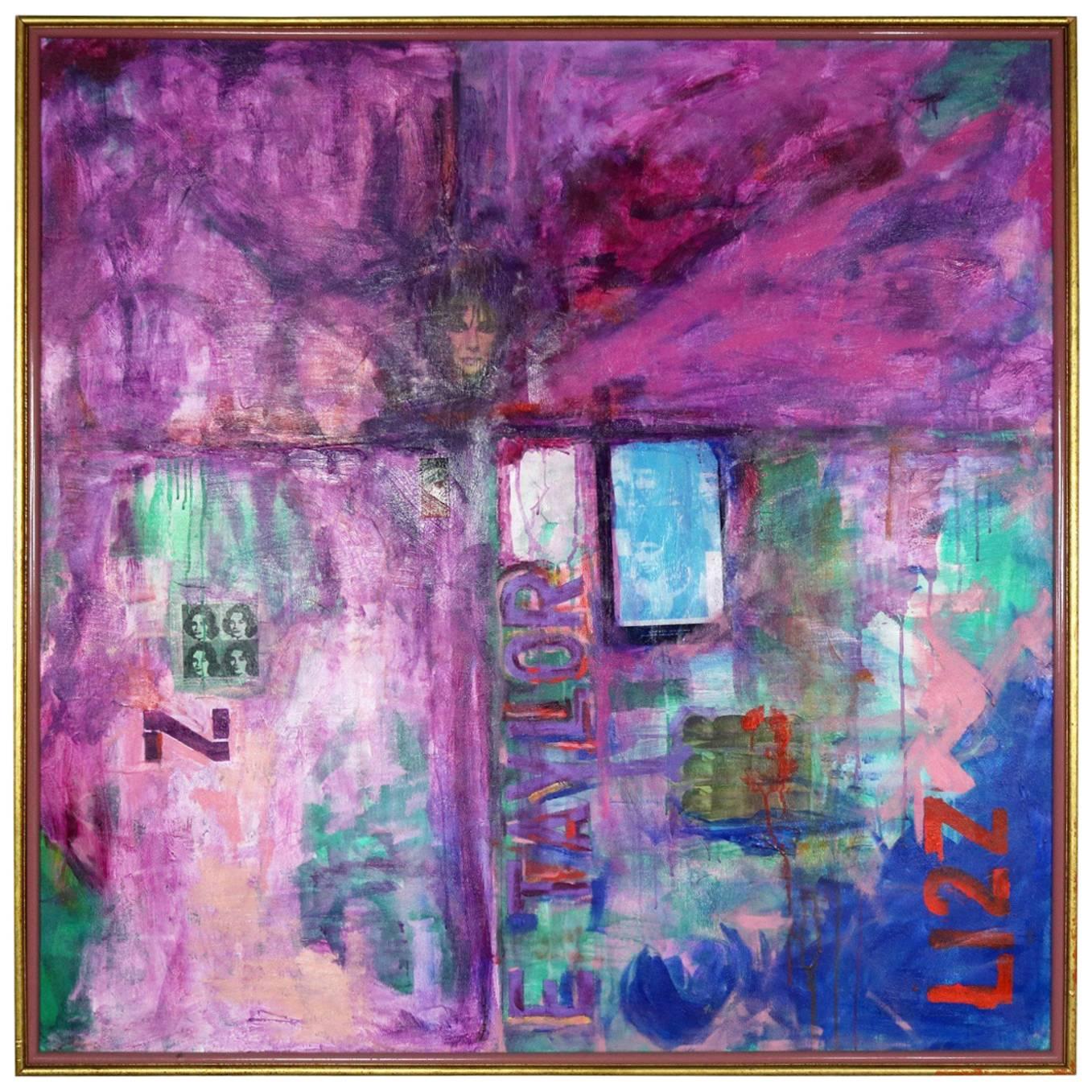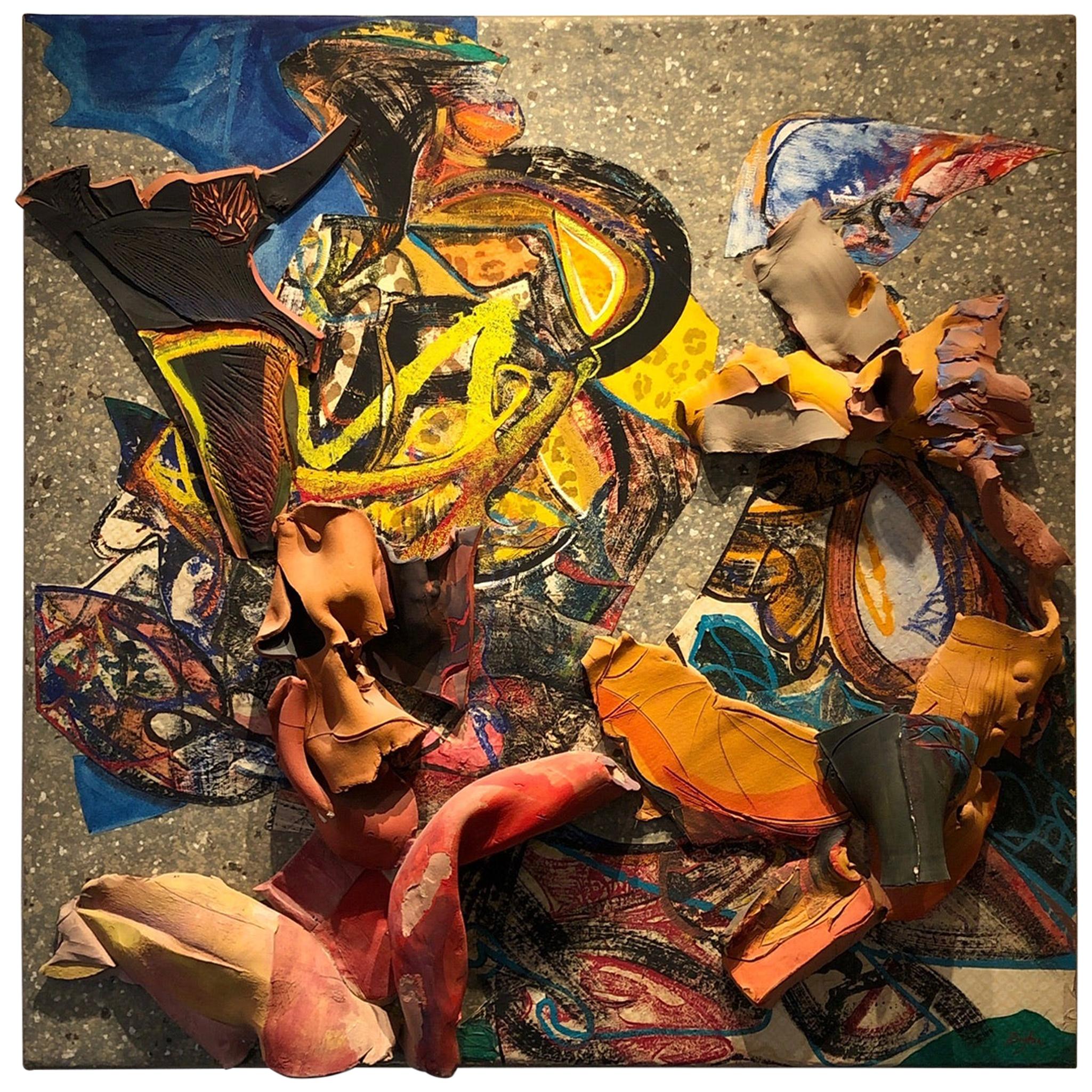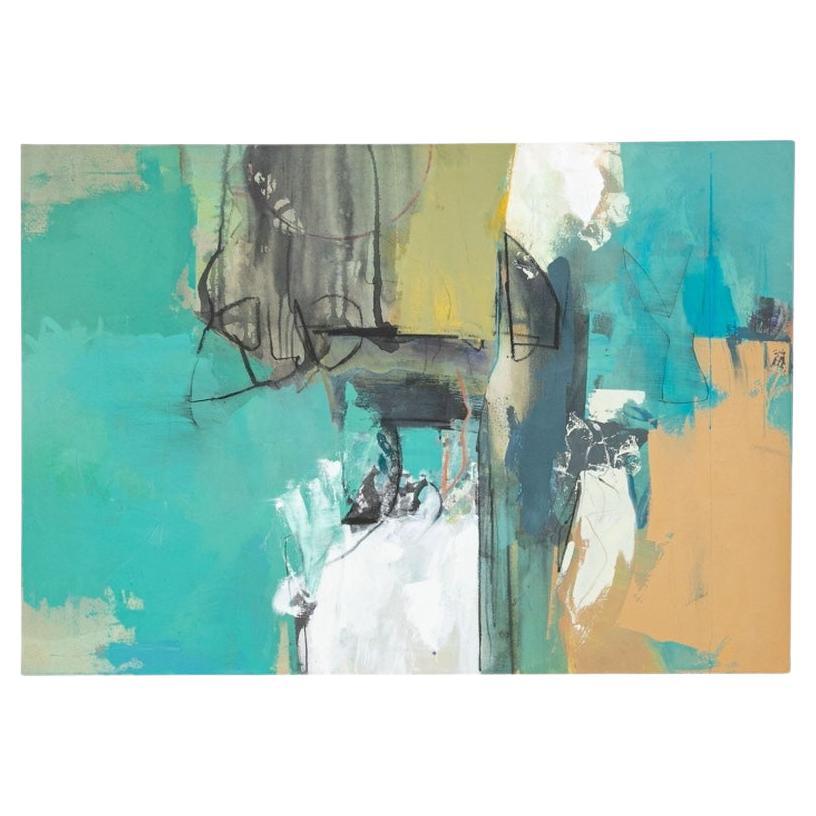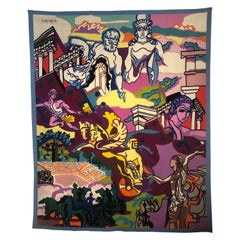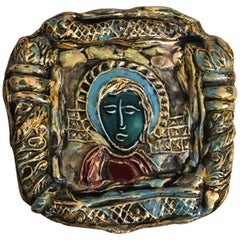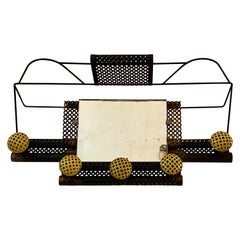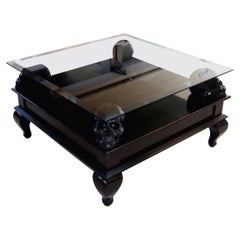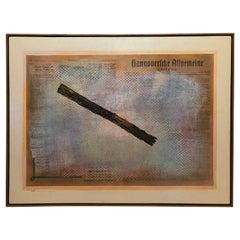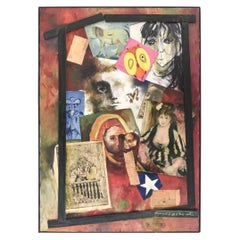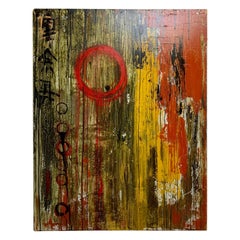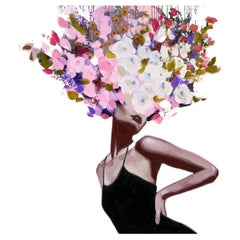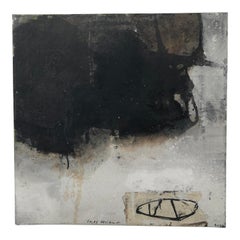
Ines Hildur German Artist, Black with Boat Mixed-Media on Canvas
View Similar Items
Want more images or videos?
Request additional images or videos from the seller
1 of 11
Ines Hildur German Artist, Black with Boat Mixed-Media on Canvas
About the Item
- Creator:INES HILDUR (Artist)
- Dimensions:Height: 23.63 in (60 cm)Width: 23.63 in (60 cm)Depth: 1.38 in (3.5 cm)
- Materials and Techniques:
- Place of Origin:
- Period:
- Date of Manufacture:2017
- Production Type:New & Custom(One of a Kind)
- Estimated Production Time:Available Now
- Condition:
- Seller Location:Paris, FR
- Reference Number:Seller: Peint/G 0008-5/121stDibs: LU4817215725651
About the Seller
5.0
Vetted Professional Seller
Every seller passes strict standards for authenticity and reliability
Established in 2017
1stDibs seller since 2019
54 sales on 1stDibs
Typical response time: 5 hours
Authenticity Guarantee
In the unlikely event there’s an issue with an item’s authenticity, contact us within 1 year for a full refund. DetailsMoney-Back Guarantee
If your item is not as described, is damaged in transit, or does not arrive, contact us within 7 days for a full refund. Details24-Hour Cancellation
You have a 24-hour grace period in which to reconsider your purchase, with no questions asked.Vetted Professional Sellers
Our world-class sellers must adhere to strict standards for service and quality, maintaining the integrity of our listings.Price-Match Guarantee
If you find that a seller listed the same item for a lower price elsewhere, we’ll match it.Trusted Global Delivery
Our best-in-class carrier network provides specialized shipping options worldwide, including custom delivery.More From This Seller
View AllFrench Artist Charles Lapicque Tapestry Limited Edition 1/2 "Pelops", 1964
By Charles Lapicque
Located in Paris, France
Exceptional limited edition 1/2 tapestry "Pelops" with certificate from a private collection,
1964.
Ateliers Pinton brothers in Felletin, under the supervision of Pierre Baudouin
2ex + 1EA Editor Aram Iynedjian. The tapestry will be sold with its certificate of authenticity from the gallery.
From the 15th century, the name of Pinton was associated with the Aubusson tapestry. Since then, over the generations, the Pinton family has largely contributed to the development of this fabulous cultural heritage until the creation in the 19th century, of the Felletin factory, in the department of Creuse. Even today, in these workshops, the craftsmen execute the same correct gestures with the same attention to detail and thus extend the chain of the history of the tapestry of tradition but also contemporary. The hand of specialists, the eye of designers and dyers and the taste of the most demanding clientele find their meaning in the fabric of the carpets. The excellence of French know-how, a living heritage society and custodian of Aubusson's cultural heritage, has always collaborated with great artists. The works of Charles Le Brun, Charles Lapicque, Pablo Picasso, Jean-Michel Othoniel, and many other big names in the world of painting, architecture, design, fell into the looms and know-how ancestral of this unique Creuse creator.
Editor Aram Iynedjian
Aram Iynedjian, Lausanne gallery owner and editor of tapestries from Braque, Estève and Lapicque, the latter meets Pierre Baudouin, the most famous of the cardboard painters of the time. The one who translated the works of Le Corbusier, Calder or Picasso into tapestry then collaborates with Charles Lapicque and they will develop a work of great richness.
Lapicque came to realize these two summits which are "Pélops" and "Diane et Actéon".
I realize that you should never try to describe a work of art
Let’s look at it. Let us admire the science of composition, linear purity, technical perfection, the beauty of color, the truth of the drama. Let us see, if we can, the implacable presence of genius.
"We will now understand that after having based a painting on the love of tapestry, it was relatively easy, and very tempting, to build a tapestry faithful to my painting," explained the artist in the exhibition catalog. of the Galerie Verrière in 1970. It was not until 1961 that he began to produce cardboards both for the tapestry of the Lisse in Aubusson, but also at the Mobilier National, with the help of Pierre Baudouin
Charles Lapicque (1898-1988)
Born in 1898 in Theizé (Rhône) in a family practicing both the arts and the sciences, Charles Lapicque is no exception to the rule: gifted for music and drawing, he graduated from the École Centrale in 1921, works as engineer until 1928 before integrating in 1931 a laboratory at the Faculty of Sciences of Paris, where he carried out research on the perception of colors, crowned by the title of Doctor of Physical Sciences in 1938. He thus studies the reactions of the eye in front of an intense light source, at the origin of the formation of starry images which he will use in his works, and defines a theory of the staggering of colors in space which overturns the rules of the Renaissance: "I had shown that the Classic rule, that of Vinci, advocating placing the blues in the distance, the reds, oranges and yellows in the foreground, is
a nonsense; it makes more sense, more favorable to do the opposite. "(In Red and blue in the arts, 1936)
It was around 1920 that Charles Lapicque began to paint in Brittany where he spent every summer since his childhood, first on the motif and then in a workshop that his stepfather Jean Perrin, Nobel Prize in Physics, had him build in 1927 ; he then definitively adopted the work of memory, in accordance with the art of music which he deeply loved and the Bergsonian philosophy of knowledge: "It is up to us to give reality an appearance that it has no itself, a form, a figure (...). "
His youthful production immediately reveals a great originality, oscillating between figuration and abstraction which sometimes intertwine: alongside synthetic paintings by their simplified drawing and their flat colors, he designs an Homage to Palestrina (1925), composed of a grid derived from Cubism, entirely abstract, relayed by a Christ with Thorns (1939), according to a principle that he will develop after 1939, in line with his optical discoveries. In fact, during the war years, an almost abstract period began, that of the tight blue framework, applied to backgrounds ranging from yellow to red and revealing a more or less identifiable world (Jeanne d'Arc crossing the Loire, 1940; Rencontres series, 1940-1945). Exhibited in 1929 by the gallery owner Jeanne Bucher, Lapicque abandoned his scientific career in 1943 to devote himself entirely to painting.
He continued his work which resulted in 1946-1953 in white-frame structures; their much softer lines lead him to the system of
either black or white interlacing which encloses areas of pure color, most often in solid color. With The Battle of Waterloo in 1949, Lapicque still uses optics - zooming in on a given area - to depict spaces with multiple perspectives and decomposed times.
This new interest in the liveliness of color developed in the following period, which can be described as flamboyant or Baroque (1954-1963): illustrated in particular by the series of Breton lagoons and twilight or nocturnal views of Venice in the light. Stars, which the artist himself describes as “daring sweets”, it begins with the Raoul Dufy Prize of the Venice Biennale, awarded in 1953 to the artist who took the opportunity to give free rein to his passion for the Serenissima until July 1956.
Another point in common with his elder brother is the expression of movement. Begun in 1949 in The Battle of Waterloo then in 1952 with Dimanche aux regates, it became an obsession from 1964, in the exploration of new themes, such as the different shots of tennis players captured on the fly (1965), the mythological scenes and sea storms.
These dizzying years precede the artist's last period: as he comes of age, he discovers serenity, revealed by a painting now with acrylic paint, much more peaceful from 1974, which even borders on a childish naivety at the end. of his life.
All of his work includes an astonishing diversity of themes, also nourished by his travels (Rome in 1957, Greece in 1964, Holland in 1974 ...), with a predilection for the sea, rocks, sailboats, music, tennis, horses, wild beasts, but also for history and mythology, as evidenced by knights, kings and ancient gods. It also deploys, in total creative freedom, a wide variety of styles and orientations. Having been one of the pioneers of non-figurative art, thus paving the way for artists like Manessier, Bazaine, Vieira da Silva, De Staël, etc. Owners of the new non-figurative Paris School of the Postwar period, Charles Lapicque then returned to figuration, in a "new interpretation" of appearance, even if he continued to rub shoulders with abstraction at times.
"Drawing runs after color and color after drawing. "
Heir to the Fauves, Charles Lapicque plays like them on pure colors, whose dissonances, associated with a totally free design and an overloaded composition in a multiple space, make him a precursor of the New Figuration in all its forms: the Narrative Figuration born in France in the early 1960s, represented in particular by Gérard Fromanger, Erró, Bernard Rancillac and Gérard Guyomard; Free Figuration born in the early 1980s, marked by Robert Combas, Hervé and Richard Di Rosa, Louis Jammes and François Boisrond, and which, in turn, influenced the American Bad Painting of a Jean-Michel Basquiat or a Keith Haring, deliberately neglected and Expressionist; Lapicque's “Classic subjects” were able to feed Cultivated Painting, which also appeared in the early 1980s with Jean-Michel Alberola, Patrice Giorda and Gérard Garouste...
Category
Mid-20th Century European Tapestries
Materials
Wool
Marc Roussel French Ceramist, Saint Portrait, Vallauris, 1960s
By Marc Roussel
Located in Paris, France
A very rare and beautiful portrait of a Saint, a polychrome ceramic signed hand on the reverse Marc Roussel.
Marc Roussel is the father in Law of François Lembo, as his son-in-law h...
Category
Early 20th Century French Contemporary Art
Materials
Ceramic
Wall Hat- Coat Rack with Mirror in Black and Yellow by Mathieu Matégot, 1950s
By Mathieu Matégot
Located in Paris, France
Very rare and big French metal wall coat rack by Mathieu Matégot with a mirror.
Lovely colorful coat rack by Mathieu Matégot in lacquered and perfor...
Category
Mid-20th Century French Coat Racks and Stands
Materials
Metal
Black Skull Marble Table by John Bizas limited Edition 1/8
Located in Paris, France
The black Skull table is a limited edition of 8, designed and produced in Italy by the artist John Bizas.
Its design following some of the rococo style p...
Category
21st Century and Contemporary Italian Rococo Sofa Tables
Materials
Marble
Pair of White Crystal Lamp Bases with Silver Bronze
Located in Paris, France
Pair of white crystal lamp bases with silver bronze highlights H 64 x diameter 14. The crystal pieces come from one of the oldest glass houses in Pa...
Category
Late 20th Century European Table Lamps
Materials
Crystal, Bronze
Blown Glass Vase of Benor Cleared Acid Multilayer Glass with Floral Decoration
Located in Paris, France
Pretty blown glass vase of Benor cleared acid multilayer glass with floral decoration.
It is a production of glassware Art of the island of Bendor.
Signed, on the top, Bendor.
Category
Mid-20th Century French Vases
Materials
Blown Glass
You May Also Like
Robert Natkin Acrylic on Canvas Mixed-Media Painting
By Robert Natkin
Located in Westport, CT
Robert Natkin acrylic painting on canvas with paper feather's and mixed-media.
Category
Mid-20th Century American Mid-Century Modern Contemporary Art
Materials
Wood, Canvas, Acrylic, Paper, Feathers
Original Mixed Media Collage on Canvas with JFK Tribute, circa 1974
Located in Norwalk, CT
"I am part of all i have met", Oil, wood, canvas, and paper on canvas, circa 1974. Signed illegibly lower right; presented in a low-profile painted wood frame.
Perhaps in the manner of Robert Rauschenberg, this fascinating collage is titled after a quote from "Ulysses" by Alfred, Lord Tennyson and includes a clipping of a tributary poem to John Fitzgerald Kennedy, the star from the Texas flag...
Category
Late 20th Century American Paintings
Materials
Canvas, Wood, Paint, Paper
Mixed Media Painting on Board
Located in Denton, TX
Layers of paper and paint make this artwork stand out on it's own.
Unsigned.
Category
20th Century Modern Paintings
Materials
Wood, Paint, Paper
$1,050 Sale Price
30% Off
Anna Kincaide (Am., 21st C.) Oil And Mixed Media On Canvas, Fashion Model With F
Located in Bridgeport, CT
Monogrammed lower right, signed, dated 2018, with title on verso- "Have You Got Somewhere Better to Be?". A Surreal painting featuring a fashion model type figure wearing a black sli...
Category
21st Century and Contemporary American Mid-Century Modern Paintings
Materials
Canvas
Contemporary Painting Mixed Media on Canvas by Bomberbax Inspired by Cryptoart
Located in Milano, IT
Contemporary painting made by the artist Bomberbax from 2021. The painting is made with mixed media on canvas and newspaper applications inspired by the vintage circus world. Iconogr...
Category
2010s Italian Arts and Crafts Contemporary Art
Materials
Canvas
$13,914 Sale Price
20% Off
Laurel Sparks 'Am., 21st C.' Contemporary Mixed Media on Canvas, Abstract
Located in Bridgeport, CT
A colorful and dynamic artwork by Laurel Sparks. Signed, dated 2008 and titled "Christmas in July" on the stretcher. A large canvas with large sections in textured white, pale blue a...
Category
21st Century and Contemporary Mid-Century Modern Contemporary Art
Materials
Textile, Canvas, Wood, Beads
